You have no items in your shopping cart.
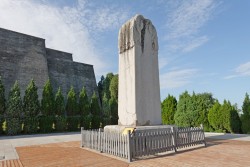

Introducing Famen Temple
Famen Temple, located 110 kilometers west of Xian, has a history spanning 1800 years. Originally, Famen Temple was a pagoda built during the reigns of Emperor Huandi and Emperor Lingdi of the Eastern Han Dynasty between 146 and 189 AD to enshrine relics of Buddha. After being built into a temple, Famen Temple was called King Asoka Temple. King Ashoka, the third king of the Mauryan Dynasty in India during the third century BC, converted to Buddhism and began spreading the religion throughout India and beyond. He divided the sarira relics of Sakyamuni Buddha into 84,000 parts and sent them all over the world to build pagodas for worship. 19 of these relics were sent to China, with Famen Temple being the 5th recipient. Considered the “ancestor of pagoda temples in Guanzhong,” Famen Temple has become the most revered Buddhist holy place of pilgrimage in China and even in the world. The pagoda of Famen Temple is known as the “True Relic Pagoda.”
Watch this video showcasing Famen Temple
Kind Notice: This video is not available in China (YouTube is blocked). If you are in China, click here.
Famen Temple Fast Facts
• Chinese Name: Famensi 法门寺
• Best Time to Visit: All year around
• Recommended Visiting Hours: About 3 to 4 hours
• Things to Do: Buddhism Study
• Opening Hours: 08:30-19:00 from Mar. to Nov./ 09:00-18:00 from Dec. to Feb.
• Entrance Fee: ¥120/person from Mar. to Nov./ ¥90/person from Dec. to Feb.
• Address: Famen Town, Fufeng County, Baoji, Shaanxi Province
What to expect at Famen Temple
Famen Temple comprises three parts: the temple area, the museum, and the new cultural scenic area. Constructed 1800 years ago during the Eastern Han Dynasty (25-220), the temple’s prosperity began during the Northern Wei Dynasty (386-534) and reached its peak during the Sui and Tang dynasties (581-907), when it was known as an imperial temple. In 874 AD, the Buddha’s finger relics and 2,499 unparalleled treasures offered by Tang Dynasty emperors were sealed into the crypt beneath the pagoda. Today’s temple was reconstructed in the architectural style of the Tang Dynasty. The 47-meter-tall True Relic pagoda was built in the style of a 13-level octagonal pagoda from the Ming Dynasty. Famen Temple Museum displays most of the precious treasures discovered from the crypt of Famen Temple, including gold and silverware, colored glaze ware, porcelain, and silks. The Namaste Dagoba was constructed not only as a place of worship but also to house the true relic of Buddha’s finger bone sarira. The finger bone sarira of the Buddha is enshrined in the underground palace of the Namaste Dagoba and is brought up to the first floor on the 1st and 15th days of each lunar month, as well as on Saturdays, Sundays, and public holidays for tourists and devotees to pay their respects.
Famen Temple Pagoda
At the center of the temple is the 13-tiered octagonal pagoda under which it is said, a sliver of the finger bone of Sakyamuni buried. In 1981, subsidence of the pagoda led to reconstruction, during which, an Underground Palace was discovered unexpectedly in 1987. Many royal treasures and jewelry were found here-more than 2,000 pieces surrounded the Tang mandala (geometric designs, usually circular, symbolizing the universe). The most precious one is the veritable Finger Bone of the Sakyamuni Buddha. At present, this is the biggest Buddhist underground palace so far discovered. From the grand architectural style, it is said to have been established in the Tang Dynasty (618-907). But why, and how such precious treasures were stored under the pagoda. Tracing back to a most flourishing time in Chinese history, formerly, Famen Temple was the royal temple during the Sui Dynasty (581-618) and Tang Dynasty. Emperors in Sui and Tang believed that enshrining and worshiping the bone of Sakyamuni would bring riches and peace to the land and its people. So an offering of treasure to the finger bone was made, it was housed in the Underground Palace.
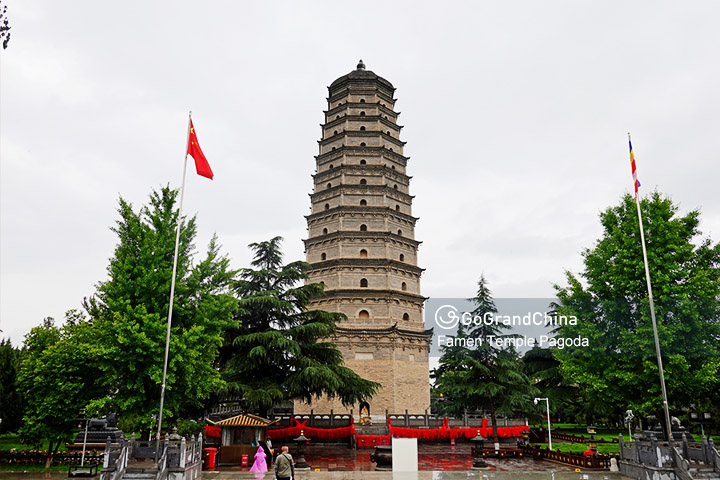
Famen Temple Museum
Due to the appropriate collection and further expounding of the cultural connotations of the treasures to the public, the Famen Temple Museum was established in 1987, which includes most of the precious treasures from the Tang Dynasty removed from Underground Palace, including gold and silverware, colored glaze ware, porcelain and silks. Owing to more and more tourists and their curiosity to the relics, two new exhibition halls were established in 2000. The exhibition area expanded from 500 square meters to 3,000 square meters, which well caters for the interest of tourists.
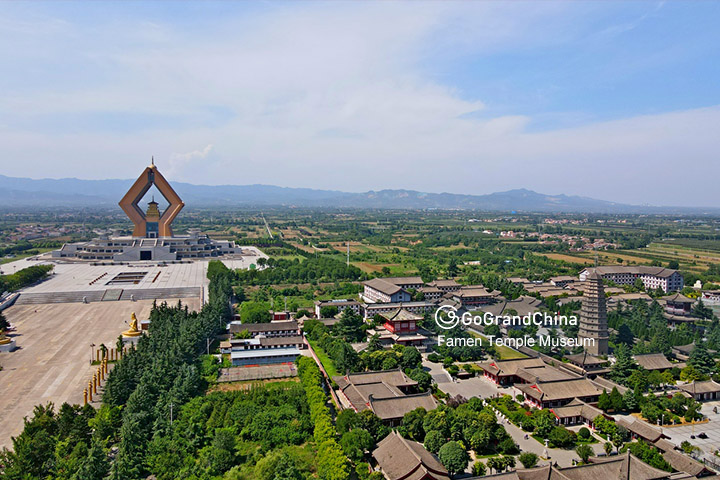
Namaste Dagoba
Namaste Dagoba was completed on May 9, 2009 after the construction of 3 years. The Namaste Dagoba is used to enshrine the only relic of Sakyamuni's finger bone in the world. The full height of the dagoba is 148 m (162 yd). The numbers "148" were chosen because "1" symbolizes that the Buddha does not differ from all other beings. The Buddha is only the awakened being while other beings are yet to be enlightened. The "4" and "8" denote the 8th day of the 4th lunar month, the birthday of Buddha. The architectural design of Namaste Dagoba represents the Buddhist thought of unification, concord harmony and peace. The one and only relic of Sakyamuni's finger bone in the world was enshrined in the underground palace in the Namaste Dagoba. The finger bone is brought up to the first floor at the Namaste Dagoba on the 1st day and 15th day of each lunar month plus Saturdays and Sundays for tourists and devotees to pay homage.
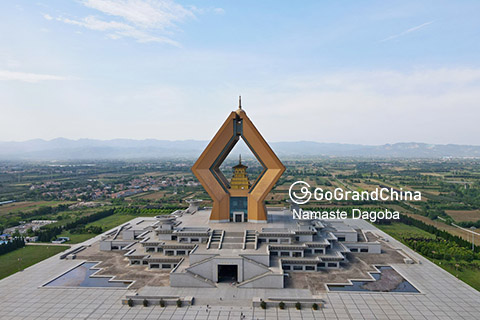
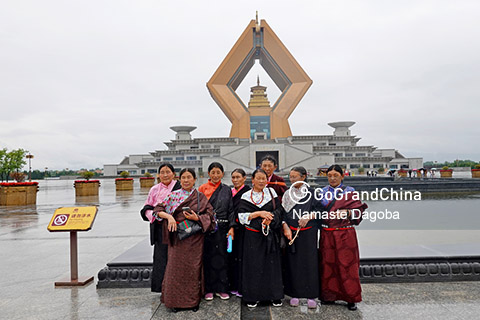
How to get to Famen Temple
• Depart from Xian: Take a direct tourist bus from Xian West Passengers Bus Station to the temple.
• Depart from Baoji: Take a direct bus from Baojing Long Distance Passengers Bus Station to the temple.
Additional travel advice on Famen Temple
• The admission ticket is a pass for Famen Temple, Famen Temple Museum and Namaste Dagoba.
• There is a check-in gate at the underground palace. If someone tells that he can lead you to enter the temple from rear gate by giving him less money than the entrance fee, please do not believe him.